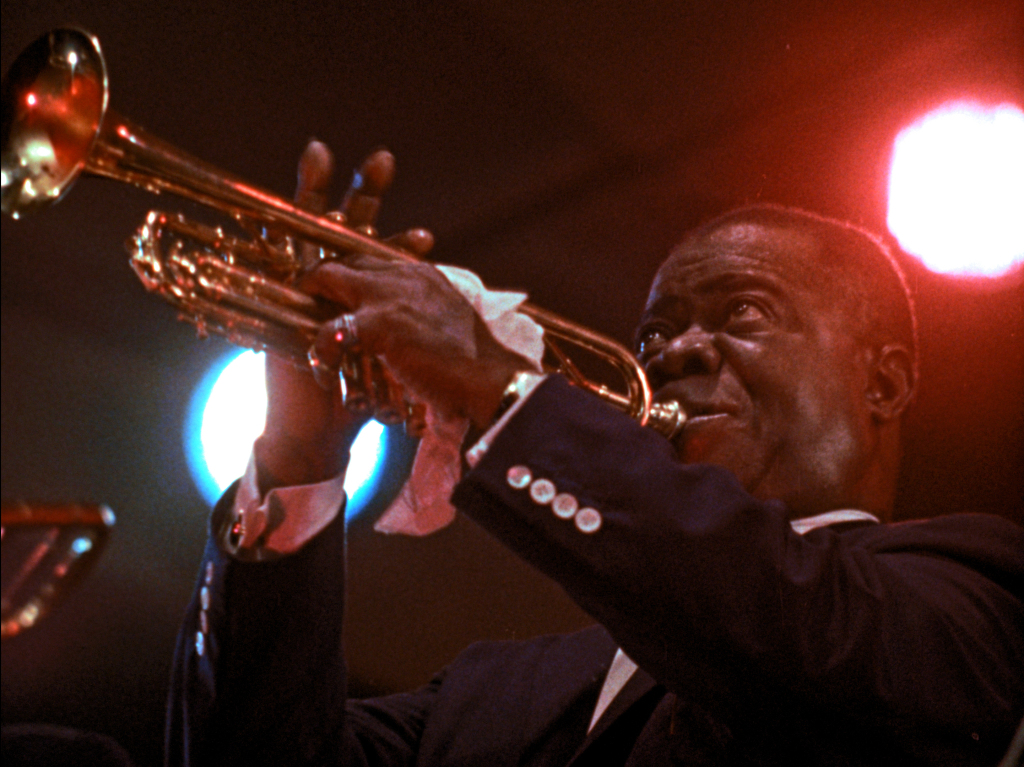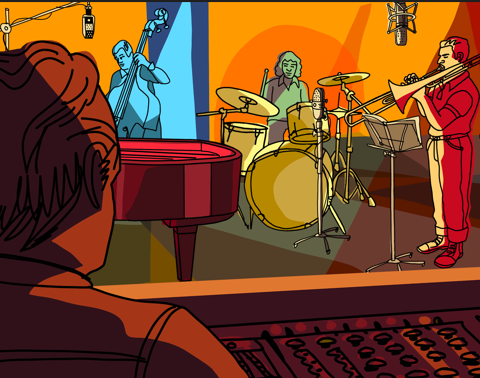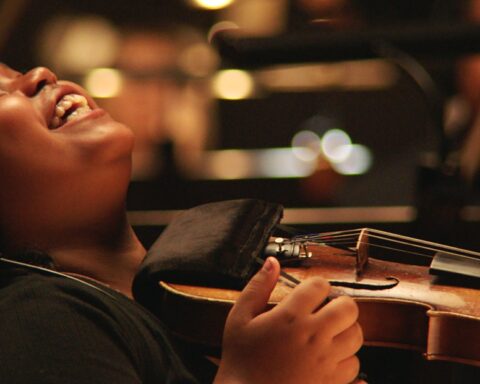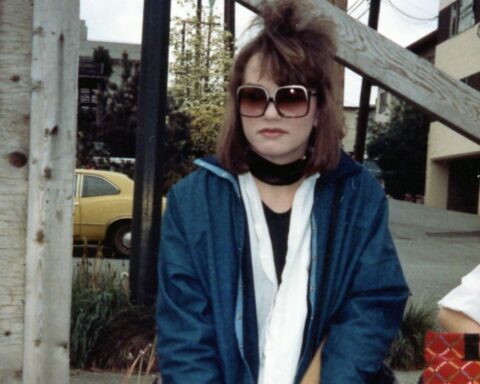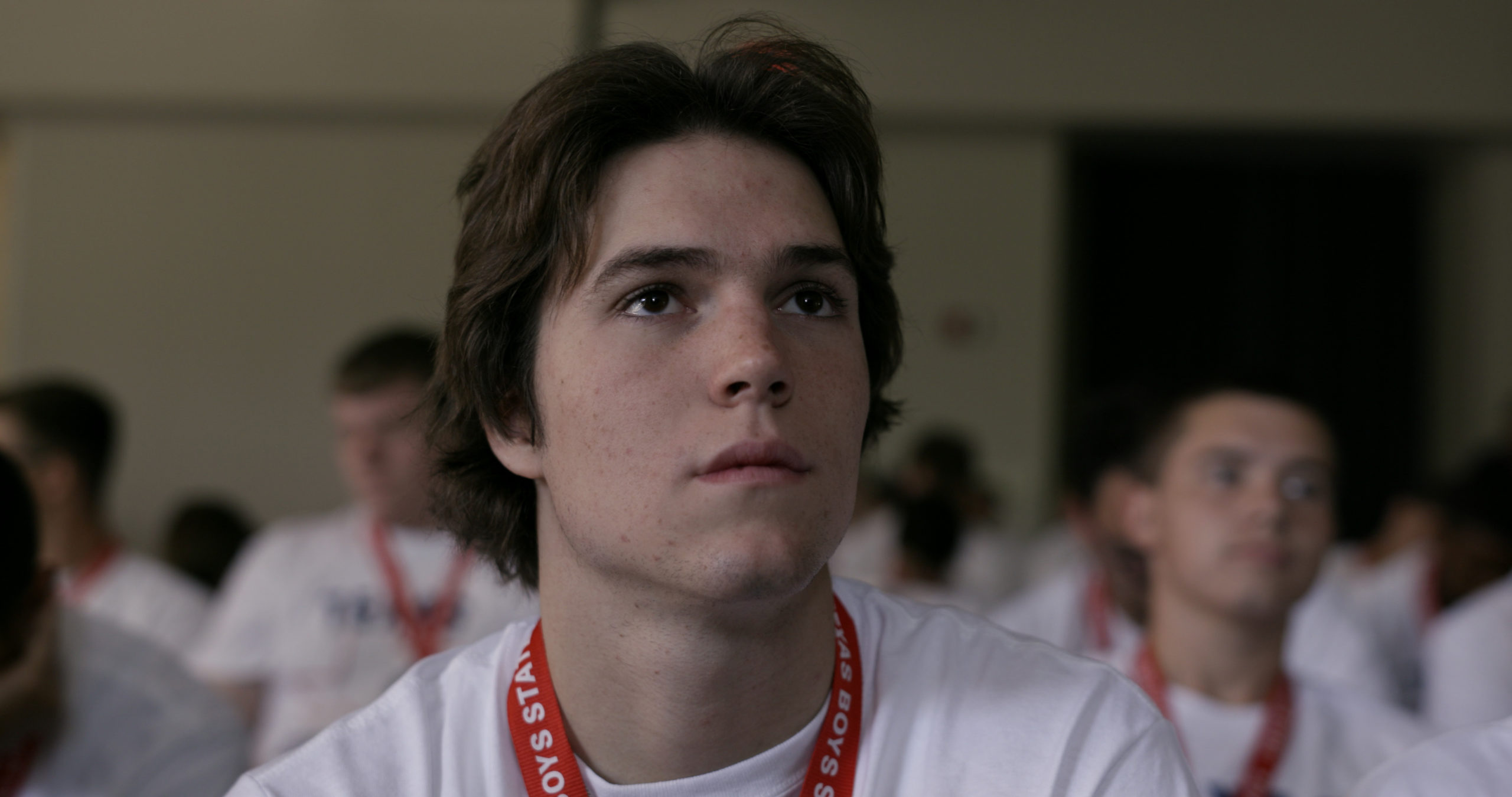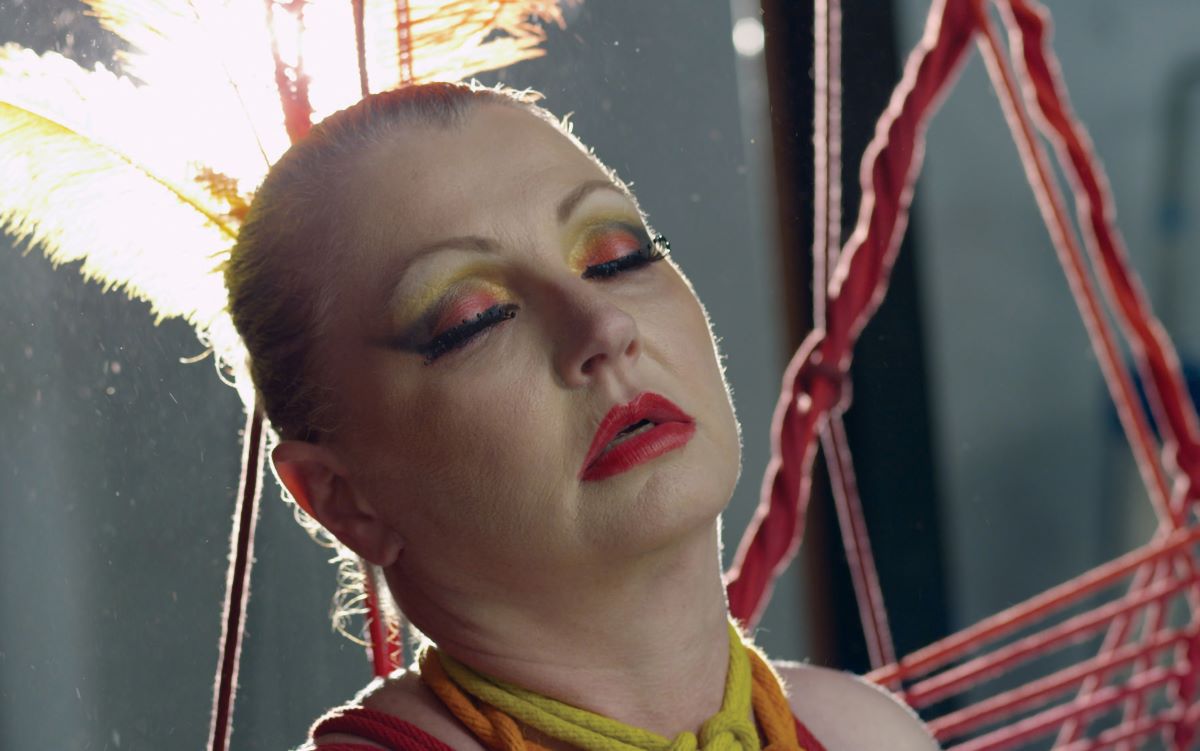Jazz on a Summer’s Day
(USA, 85 min; 1959)
Dir. Bert Stern and Aram Avakian
Featuring: Louis Armstrong, Mahalia Jackson, Anita O’Day, Thelonious Monk, Jack Teagarden, Chuck Berry, Dinah Washington, Chico Hamilton, Eric Dolphy, Sonny Stitt, Jimmy Giuffre, Gerry Mulligan, Big Maybelle
Let’s dispense with the suspense, all you cats and kittens. Jazz on a Summer’s Day is not only the first documentary made about a music festival, it still stands up as one of the most beautifully made films ever made in this ever-popular genre. Bert Stern, whose exquisite photos of Marilyn Monroe taken for Vogue magazine in the months before her death are hailed to this day for their sensitivity and awareness of the actress as a woman, not just a sex symbol, created the look for this evocation of the 1958 Newport Jazz Festival. His visuals are matched artistically with the editing of Aram Avakian, Stern’s co-director and latterly the editor for such notables as photographer/filmmaker Robert Frank, New York hipster Arthur Penn and the great American news broadcaster Edward R. Murrow.
Stern and Avakian decided to not only cover the jazz festival but also give viewers a sense of the genteel New England town of Newport and their famous yacht race, the America Cup. Tying yachts, jazz and old money together are a group of Yale music students driving through the streets in an old jalopy while playing Dixieland tunes. Jazz afficionados bemoan the fate of pianist Thelonious Monk’s solo on “Blue Monk” being overwhelmed by an announcer at the yacht race but the shots of shimmering waves on the Atlantic gleaming in the afternoon sun while Monk’s group continues to play are simply gorgeous. Avakian edits in a virtuoso manner as he juggles scenes of frat boys and girls dancing on the rooftop of a dilapidated formerly stately home, kids playing with their parents on a stunning beach and the Yale jazz mobile players careening in a fairground with shots of the very hip spectators taking in the afternoon’s music entertainment.
A highlight takes place quite early with the appearance of the bop vocalist Anita O’Day. Attired for teatime in an elegant black dress with a white trim, O’Day wore an almost absurdly large round black hat and accompanied her look with tight white gloves and see though high heels. But this wasn’t a normal teatime. O’Day treated the audience (and viewers to this day) with effortlessly cool renditions of “Sweet Georgia Brown” and “Tea for Tea,” prolonging words like “sweet” and “tea” to emphasize their musicality—and then moving the lines into staccato bursts over “Georgia Brown” and “for two.” Rarely raising her voice, she drew the audience into her spell, as she scatted through the songs, roasting the old chestnuts to make them tasty again. O’Day’s performance prepped us for the evening’s festivities when old Newport and its race were called on account of darkness and the festival truly took centre stage.
That evening at Newport the crowd got to hear the very popular vocalist Dinah Washington singing the standard “All of Me” and jam in a teasing way on vibraphone with Terry Gibbs; baritone sax sensation Gerry Mulligan improvising with trumpeter Art Farmer; blues shouter Big Maybelle pushing trombone player extraordinaire Jack Teagarden and his big band into a raucous version of “I Ain’t Mad at You” and the young Chuck Berry showing off his rock’n’roll grooves with a rousing version of “Sweet Little Sixteen.” As if remembering that the festival was about something serious, the performance after Berry showed how classical music could merge with jazz. Percussionist Chico Hamilton’s band, which featured the impressive Eric Dolphy on flute, played their mesmerizing “Blue Sands” to a clearly charmed crowd. (Earlier cellist Nate Gershman was shown playing the prelude to Bach’s “Cello Suite No. 1” during the hot doldrums of the afternoon.)
Finally, the festival and the film rolled out its biggest star, Louis Armstrong. Satchmo played to the audience, telling wild anecdotes of his recent Asian tour before singing and playing trumpet with his band until they segued from “When the Saints Go Marching In” to “Ol’ Rocking’Chair.” The audience roared as Satch’s old pal Jack Teagarden stood next to him as they lovingly improvised their acclaimed version of “Rockin’ Chair.” It’s a moment of pure musical bliss and way ahead of its time: a white Texan and the African-American New Orleans bred Armstrong singing about old Aunt Harriet and that revered chair. Old fashioned and vaudevillian of course, but played with genuine affection by two old gold performers.
Wrapping up the summer’s day, which had already turned into Sunday since it was past midnight, was the astonishing Mahalia Jackson who stirred the crowd with “Don’t It Rain, Children” before singing “The Lord’s Prayer.” What could be more appropriate from a singer who reacts to the audience’s huge applause with a simple statement: “You make me feel like a star,” than this concluding act in the film?
To be honest, many people have objected to the film’s legendary status. Jazz fans have decried the music selections, which included Chuck Berry and Big Maybelle and Mahalia Jackson, none of whom should, by strict definition, have been in the Newport festival. Where were Duke Ellington, Lester Young, Sonny Rollins, Maynard Ferguson, and most of all, Miles Davis? All were at the festival but none was shot for the film, on strict orders from Columbia Records producer George Avakian, Aram’s brother, who had arranged their entrée into Newport. It is very sad that none of these acts were filmed, particularly the Miles Davis band, which included John Coltrane and Cannonball Adderley and were only six months away from recording the great album “Kind of Blue,” arguably the most important jazz record of all time.
But Stern and Aram Avakian were after something else. They wanted to make a film that would appeal to a large audience—and their intent was artistic as well as commercial. By showing Newport in its glory and the yacht race as well as the festival, the duo captured an idyllic moment in Eisenhower America: a white middle class vision of the USA. Adding blues, gospel and rock’n’roll made the jazz festival more palatable to a film audience—and potentially more entertaining. Besides, who but a hard-hearted jazz purist couldn’t help but be moved by Mahalia Jackson?
Jazz on a Summer’s Day is one of the most important documentaries ever made. It established the style that would be used to make Monterey Pop and Woodstock and so many other ‘rock docs.’ It remains a charming look back at America’s past and does give viewers incomparable musical moments. It remains great for what it did do, though I must admit, I would have loved to have seen Miles.
Jazz on a Summer’s Day is now in re-release in select cinemas and virtual cinemas, including Hot Docs Ted Rogers Cinema.




